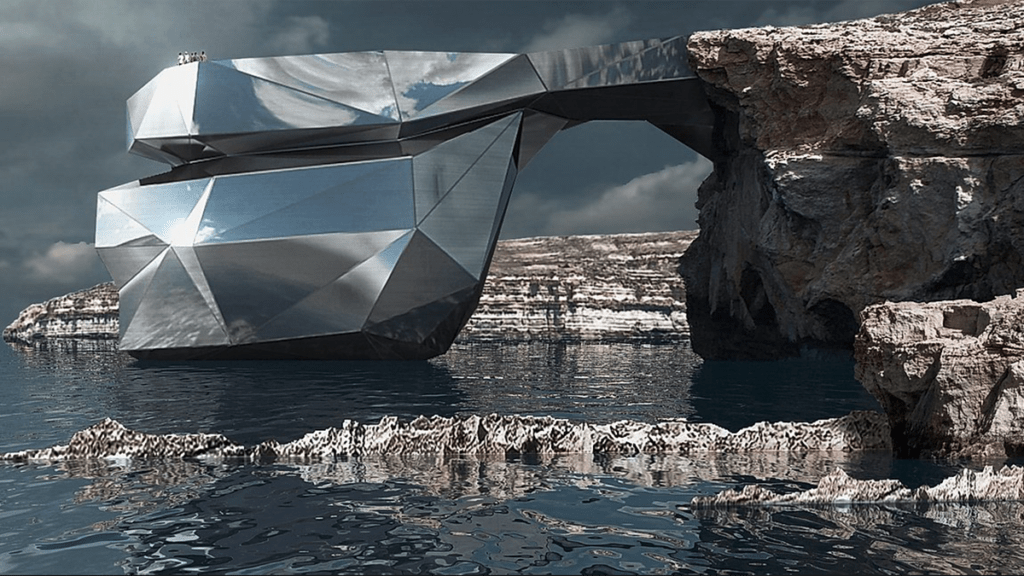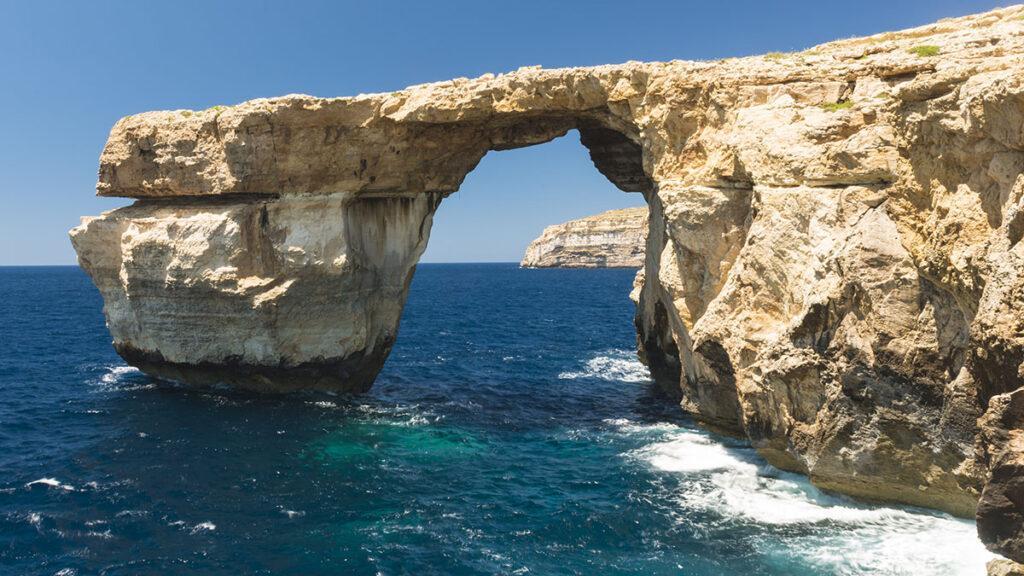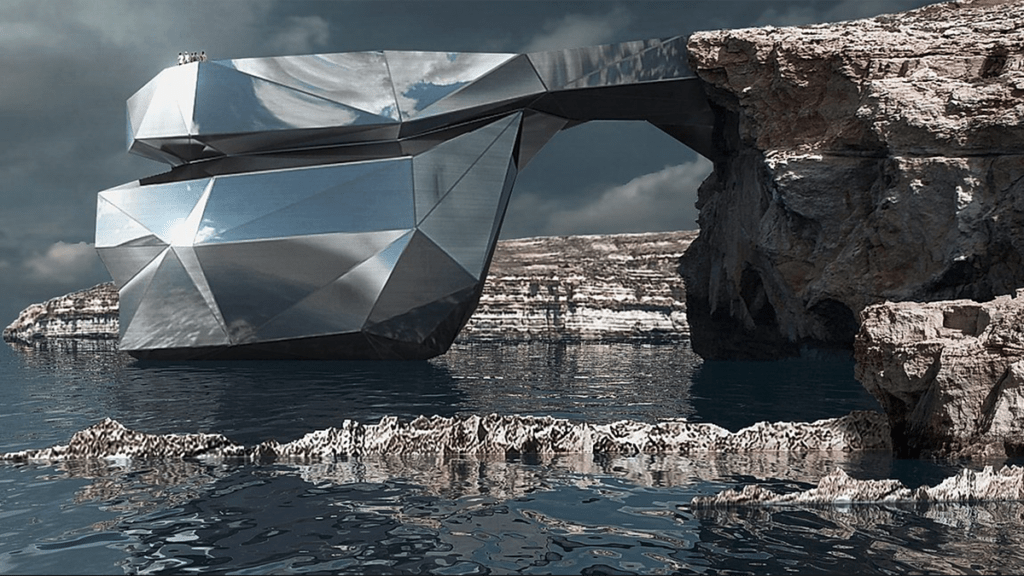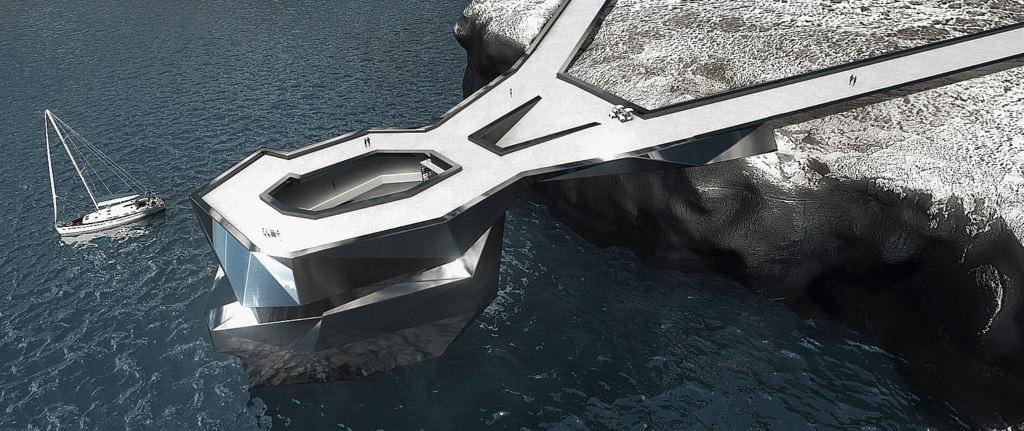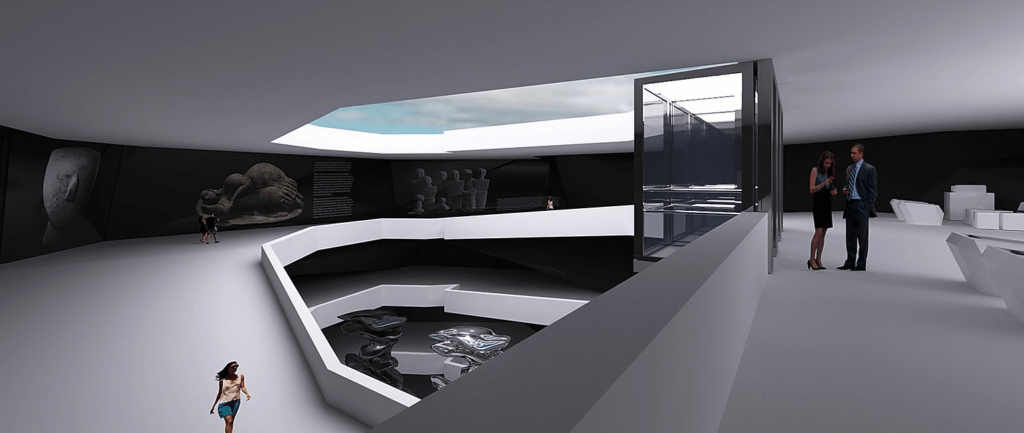Rebuilding the heart of Malta
The Azure Window on the island of Gozo was Malta’s most famous landmark. This natural arch sadly collapsed in a storm in 2017, but there are now stunning plans for its reconstruction.
The storm that swept across the small island nation of Malta on 8 March 2017 was one of the worst experienced that year. Nevertheless, it would have soon faded into memory were it not for the gaping hole in the Maltese soul left visible to all: Malta’s Azure Window, which was several millions of years old, came crashing down.
The country’s natural icon was effectively demolished.
Politicians mourn the Azure Window
The response on social media helps us to understand the huge significance of this limestone arch – roughly 100 metres long and approx. 20 metres high – for the Maltese population. Let’s go back to the day after the storm.
Former minister president Joseph Muscat expressed his shock on Twitter at 11.13 a.m. that morning: “Reports commissioned over the years indicated that this landmark would be hard hit by unavoidable natural corrosion,” he wrote. “That sad day has arrived. It is heartbreaking.”
But now, three years later, it seems very likely that the collective broken heart of the Maltese population could soon be healed. Together with interior designer Elena Britanishskaya, architect Svetozar Andreev has developed a spectacular concept for the reconstruction of this former natural landmark as an art project. The concept has already been sent to the Maltese government by the two Russian natives. But more on that later.
The Heart of Malta
This extraordinary undertaking is already officially known as “The Heart of Malta”. There is a definite architectural idea behind the structure, despite all the underlying emotions.
Looking back at the Azure Window
The plans envisage a “polygonal architectural form with mirrored steel faces” that will “blend into the landscape”. It will have the same size and the same proportions as the original limestone arch. The interior has been designed by the architect in the form of a snail’s shell.
Each floor of this oversized spiral will present one thousand years of Maltese history. To achieve this, an exhibition with relevant content is being developed for the 5,000 square metres of available space. The specific details have not yet been revealed – the only information that leaked out recently is its use of state-of-the-art laser technology.
Architect Andreev will generally rely on state-of-the-art technology and materials for the construction. He emphasizes: “For the project, we propose to make use of the latest techniques and materials available in architecture and shipbuilding, which will enable us to bring the project to reality while preserving the existing natural coastal landscape.”
Testament to tenacity
At the end of the day, he wishes to do more than simply rebuild the collapsed icon. Instead, he intends to build “a perfect monument and symbol of the fusion of modernity and nature, of time and history”.
The new arch is envisaged as a testament to the tenacity of the human spirit that is capable of defying the forces of nature.
Contradiction – or not
This actually seems to be the driving force behind Andreev’s vision. On his website, he addresses potential critics who cannot imagine how natural structures are supposed to be able to blend with artworks.
An excerpt from his statement: “In spite of the superficial impression of being in conflict with the environment, what we have in this project is an example of the ultimate conceptual and architectural integration of a structure into its physical context, meaning that here we can speak of a successful solution which goes beyond the bounds of the concept of urbanization.
The image of an Azure Window built from steel, one which reflects the sky, the land, and the sea – this is a very powerful image. Therefore we are confident that we have been able to fully and faithfully reflect in our project the interaction of humanity and nature, the theme of downfall and prevailing, as a fundamental leitmotif for contemporary culture.” End of statement.
So let’s examine the less abstract, and more practical aspects of the project: its primary aim is actually to create a new attraction for visitors from around the world, an architectural and cultural landmark that secures the country’s economic future as a tourist magnet.
New landmark to attract film-makers
There is general consensus that the film industry – always a welcome visitor to Malta – would be even more attracted by the gleaming metal construction. “I am confident that, as a cultural centre, the Heart of Malta will generate additional revenue for the country, and will reimburse the investment made in its construction through regular international cultural events, concerts, fashion shows and television broadcasts, as well as through its appeal as a location for making advertisements, music videos and films,” says Svetozar Andreev.
And so it is no wonder that the Maltese government, with the new Prime Minister Robert Abela at the helm, has shown a lot of interest in building this modern landmark. The design was officially submitted in early 2019 and is still being processed. A survey on the project’s popularity has also been conducted online. Its result: 67% of Maltese people agreed that the “Heart of Malta” should be built.
Malta already loves its new heart
And so it remains to hope that the remaining 33% of Maltese hearts can be won over by the structure when it is completed. This is the benchmark that is ultimately required in order to achieve the popularity of the natural monument that collapsed in 2017.
Text: Johannes Stühlinger
Translation: Rosemary Bridger-Lippe
Images: Svetozar Andreev; Getty Images
